
In this lesson students will practice computing the average or mean of 3 or more menu prices or numbers with decimals.
- Subject:
- Computation and Estimation
- Data and Analysis
- Material Type:
- Activity/Lab
- Author:
- Kevin Yates
- Date Added:
- 04/19/2021

In this lesson students will practice computing the average or mean of 3 or more menu prices or numbers with decimals.
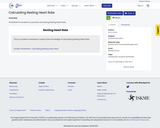
Worksheet for students to practice calculating Resting Heart Rate

This is designed originally as a Google HyperDoc and it is recommended that teachers copy the HyperDoc and adapt it as needed to suit their needs. The lesson follows the Engage, Explore, Explain, Apply, and Reflect learning structure and links to various other resources. Here are links to various resources used in this activity including models:Inverences Activity: Choice OptionInferences Activity: Unwind OptionModel: Inference and Conclusion Part OneModel: Inference and Conclusion Part Two

This project is designed to assess students' abilities to create a persuasive PSA on Car and Restraint Safety. SOL- DE15Project created by Duane Partusch, Powhatan County Public Schools

This is a virtual learning hyperdoc assignment that could be used in any course to address related careers and/or information literacy skills, though it was developed for use with 9th grade English classes. If used in a state other than Virginia, the teacher would need to replace the resource Virginia Career View and related questions in phases 3 and 4, as well as in the “Learn More” box at the bottom.
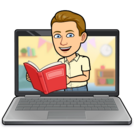
Teacher Instructs the student to navigate to Google.com. The teacher will model researching their career by typing in the search box, “What is the average salary for a teacher in Virginia.” The teacher will ask what does average salary mean and add details to the students’ responses. The teacher will then pull up the Google Sheet to be used for today’s lesson. Students will begin researching their own career choice by typing, “What is the average salary of a _______________________ in VIrginia? The students will find a low, average, and top salary for their career choices. The students will use the average or middle salary given. If more than one average is given the students will use the mathematical equation for finding the mean to calculate the average of the salaries given.
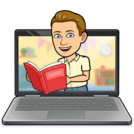
Students will lead discussion on their net pay for their chosen career, their total expenses, and the amount they will have left after paying all the monthly expenses. If there wasn’t enough money to pay all their expenses what will they need to do?
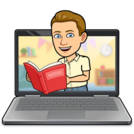
Students will research the cost of homes and expences associated with owning a home. This proccess will help the studet to determine if thier chosen salary will support the purchase of the selected home.
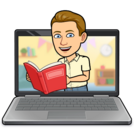
Students will pretend they have a family of 4. Use the list given by students and make sure the following are included: average cost of groceries for a family of 4average cost of health insurance for a family of 4average cost of dining out for a family of 4 (multiply this by 4 for eating out once a week)average monthly internet feeaverage monthly cable or satellite
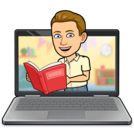
The teacher will lead discussion on cost of the vehicle versus the salary made for his/her career. What are the pros and cons of this vehicle? Students will then research the type of vehicle they want. Each student will determine the cost of the vehicle. Students will share with each other the type of vehicle they chose, the cost of the vehicle, and the pros and cons of the vehicle.

Teachers will be able to use this lesson virtually or in-person! This Google Slide deck lesson can also be downloaded as a PowerPoint! Speaker notes are included which make it easy for teachers or substitutes to teach this lesson!Read Aloud: Carmela Full of Wishes *Literacy Objective: Students will make predictions before and while reading a story. Students will retell a story using an appropriate beginning, middle, and end. Students will use evidence from the text to answer questions. Science Objective: We will be able to identify different parts of a plant. Art Objective: We will use materials in a new way to create texture in a work of art. Hampton Oaks Elementary School (Kari Nugent, Annie Schmidt, Lindsey Bruce, Melissa DiAscro, & Rebecca Fausett)
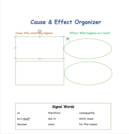
Students will be able to use the graphic organizer to see the cause-effect relationships between multiple events in a text.

Students will understand how authors organize information presented in nonfictional texts.
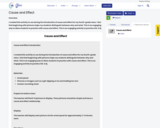
I created this activity to use during the introduction of cause and effect for my fourth-grade class. I feel that beginning with pictures helps my students distinguish between why and what. This is an engaging way to allow students to practice with cause and effect. This is an engaging activity to practice SOL 4.5j.
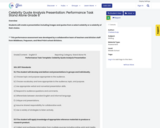
Students will create a presentation including images and quotes from a select celebrity or a celebrity of their choice. ** This performance assessment was developed by a collaborative team of teachers and division staff from Middlesex, Poquoson, and West Point school divisions.

Students will participate in a 5E lesson. To ENGAGE, students will connect their understanding of similarities between parent and offspring to the fundamental molecule of life: DNA. To EXPLORE, students will participate in interactives to observe, analyze and summarize how genes are used to create proteins and traits. In the EXPLAIN section, students will take notes on DNA replication and the Central Dogma. To ELABORATE on their understanding of DNA, students will participate in a protein synthesis race (game) to practice transcription and translation. Formative evaluations of students's ability to explain the process of protein synthesis include (1) a protein synthesis and codon practice sheet, (2) a labeling activity, and (3) making a recording that models and explain the process. As an extension, students can apply their understanding of mRNA to explain how the Pfizer and Moderna COVID-19 vaccines work. Finally, int summative EVALUATE, students model replication, transcription, and translation as they build an organism!

This lesson is intended to review 6th-grade content on watersheds, estuaries, and wetlands. It also introduces abiotic and biotic factors of ecosystems found in VA's Watershed. Students investigate the Chesapeake Bay using several resources with a pre-assessment, video clips, current article links, post-assessment, final evaluation, and rubric. A student sheet, teacher key, and google slide were created to use for face-to-face teaching or virtual learning. Click on the attached to access the folder.

Students will be given a division model, mathematical sentence, or practical problem to solve. After solving a problem, they will enter their answer into the Google Form and it will tell them if they got the correct solution. If they answered incorrectly, they will need to try again to move on. If they answer correctly, they choose which problem they want to solve next. This activity is designed so that students will complete 5 problems.
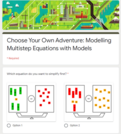
Students solve multistep equations (with variables on only one side). Students choose between two models/equations at each of six points in this Google Form activity.

Students will understand how authors organize information presented in nonfictional texts.